
Sikorsky Aircraft is an American aircraft manufacturer based in Stratford, Connecticut. It was established by famed aviator Igor Sikorsky in 1923 and was among the first companies to manufacture helicopters for civilian and military use.
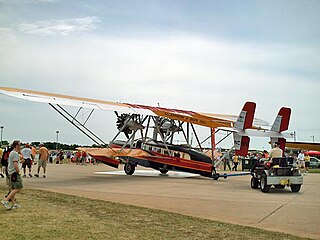
The Sikorsky S-38 was an American twin-engined ten-seat sesquiplane amphibious aircraft. It was Sikorsky's first widely produced amphibious flying boat, serving successfully for Pan American Airways and the United States military.
The Acme Sportsman was a two-seat parasol wing sportsplane built in the United States in 1928 by Acme Aircraft Corporation, a company from Rockford, Illinois. It was of conventional taildragger configuration with open cockpits in tandem and folding wings. It was designed by Edward Stalker of the University of Michigan.
The Acme Aircraft Co S-1 Sierra was an experimental aircraft of unusual configuration built in the US in 1948 to investigate the advantages of a pusher propeller configuration. Apart from this engine installation, the aircraft was unusual in having an X-shaped tail incorporating ruddervators on the upper fins. The wing was mounted midway up the fuselage and was unswept. During the 1960s, the US aerospace manufacturer Northrop used the aircraft as a technology demonstrator for boundary layer control concepts.
The White Wing was an early US aircraft designed by Frederick W. Baldwin and built by the Aerial Experiment Association in 1908. Unusual for aircraft of its day, it featured a wheeled undercarriage. The wings were equipped with ailerons controlled by a harness worn around the pilot's body; leaning in one direction would cause the aircraft to bank to follow.

The Sikorsky S-39 was an American light amphibious aircraft produced by Sikorsky Aircraft during the early 1930s. The S-39 was a smaller, single-engine version of the S-38.

The Sikorsky VS-44 was a large four-engined flying boat built in the United States in the early 1940s by Sikorsky Aircraft. Based on the XPBS-1 patrol bomber, the VS-44 was designed primarily for the transatlantic passenger market, with a capacity of 40+ passengers. Three units were produced: Excalibur, Excambian, and Exeter, plus two XPBS-1 prototypes.
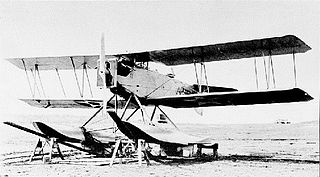
The Aeromarine AS was a seaplane fighter aircraft evaluated by the US Navy in the early 1920s.

The Edo OSE was a 1940s American single-seat multi-role floatplane designed and manufactured by the Edo Aircraft Corporation.

The Vought O5U was a 1930s prototype American observation floatplane to meet a United States Navy requirement for a catapult launched scouting aircraft. The contract was won by Curtiss who went on to produce the SOC Seagull; only one O5U was built.
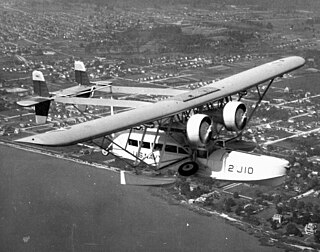
The Sikorsky S-41 was an amphibious flying boat airliner produced in the United States in the early 1930s. Essentially a scaled-up monoplane version of the Sikorsky S-38 biplane flying boat, Pan Am operated the type on routes in the Caribbean, South America, and between Boston and Halifax.

The Curtiss Model K, also known as the Model 4, was an American single-engined flying boat of World War I. It was an enlarged derivative of Curtiss's Model F and about 50 were built for export to the Imperial Russian Navy.

The Loening SL was an American submarine-based reconnaissance flying boat designed and built by Loening Aeronautical Engineering for the United States Navy.
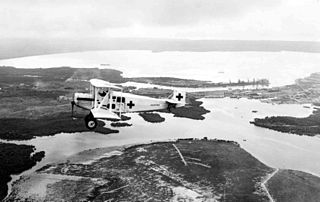
The Cox-Klemin XA-1 was a 1920s American air ambulance biplane designed and built by the Cox-Klemin Aircraft Corporation for the United States Army Air Service, only two prototypes were built.

The Engineering Division XCO-6 was an American two-seat observation biplane designed by the United States Army Engineering Division, only two were built and the type did not enter production.

The Bellanca SE was an American carrier-based scout monoplane designed and built for the United States Navy by the Bellanca Aircraft Company.
The Hall Air Yacht was a 2-seat, tandem, sesquiplane, flying boat, designed and built in the United States in 1923. The Air Yacht was Charles Ward Hall's first attempt at building an aircraft with his company Charles Ward Hall Inc. of Mamaroneck NY. Hall, and his later company Hall Aluminum Aircraft Corp., which would develop manufacturing processes for riveted Aluminium Alloy aircraft structures in the US. Charles Ward Hall is not to be confused with Charles Martin Hall, the founder of Alcoa.

The Sikorsky S-33 Messenger was an American two-seat sesqiuplane designed and built by the Sikorsky Manufacturing Corporation in 1925.
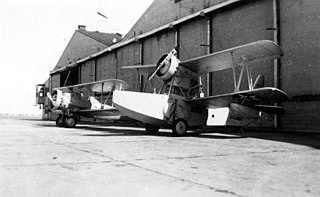
The Loening XS2L was an American biplane scout amphibian developed by Keystone-Loening, for the United States Navy during the early 1930s.
The Dayton-Wright XO-3 was an aircraft project developed by Dayton-Wright in 1924.















